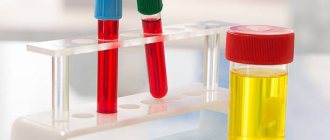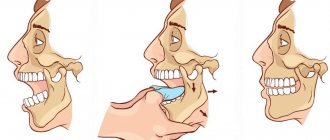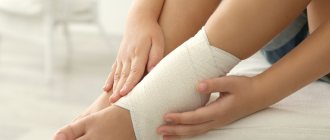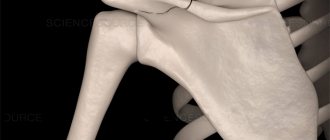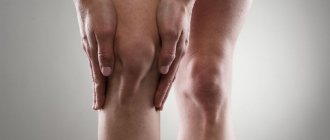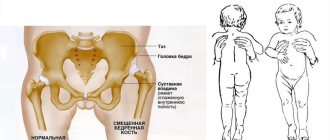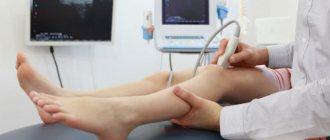What problems do our orthodontists-gnatologists work with:
- jaw crunch
- difficulty opening
- pain and discomfort
- clicking sound when chewing
_________________
But everything is in order.
Probably everyone at least once in their life has encountered such a not very pleasant sensation as a jaw crunch. It can occur during chewing, talking, yawning, or constantly accompany a person even with minor movements of the jaws. However, not everyone thinks about why the jaw crunches and either simply ignore such a symptom or begin to self-medicate, thereby only worsening the situation.
Causes of jaw crunching
There are many reasons why the jaw crunches - they can be both physiological and pathological.
So, jaw crunching can be caused by the following:
- Physiological feature.
- Childhood and young adolescence, which is characterized by increased growth of bone tissue and not always sufficient formation of synovial fluid. Synovial fluid is a kind of lubricant that reduces friction of articular surfaces. Its insufficiency causes a characteristic crunch.
- Peculiarities of the profession - people whose work involves long-term conversations and singing often complain of jaw crunching.
- Dental problems such as malocclusion, worn-out orthodontic structures, incorrectly placed fillings, dentures, caries.
- Bruxism.
- Arthritis, which can develop either primarily or as a result of certain diseases (angina, tuberculosis, otitis media, gonorrhea, etc.), rheumatism.
- Jaw injuries.
- Spasm of the masticatory muscles.
Later in the article we will tell you what to do when your jaw cracks, whether you need to treat cracking of the jaw joints, how it is treated, and which doctor to contact if your jaw starts to crack.
Diagnosis
Diagnosis of the exact causes of jaw clicking includes a number of measures:
palpation on both sides of the temporomandibular joint;- anatomical studies of occlusion;
- neurological diagnostics, including the trigeminal nerve;
- Ultrasound and x-ray of the area with pathology and tissues near it;
- a general blood test, which is required to check the absence of inflammatory diseases;
- facial electromyography;
- dental examination, even if not a single tooth hurts;
- MRI is prescribed in advanced cases and when there are no metal structures installed in the patient’s oral cavity;
- collecting information about what the patient complains about when the jaw cracked for the first time.
What to do if your jaw starts to crack?
The first question that arises for people whose jaws begin to crack is what to do and is it necessary to do anything at all?
It all depends on how long ago the jaw began to crunch, what caused this unpleasant phenomenon, whether the crunch is accompanied by other symptoms, and whether it limits the movements of the jaw. It is advisable not to decide on your own what to do if your jaw is crunching, but to immediately consult a doctor, since self-medication can only worsen the situation. Alarming symptoms that often occur along with a crunch are pain, especially radiating to the ear, temples, periorbital area, redness, swelling in the jaw joints, and tinnitus.
Many people have a question, what to do if their jaw crunches, at the pre-hospital stage, at home? If the crunch is accompanied by pain or symptoms of inflammation, you can take painkillers and anti-inflammatory drugs, lubricate the sore spot with an anesthetic, or apply ice.
Complications
If the jaw clicks only when the mouth is opened wide, usually no one is in a hurry to see a doctor. However, if you do not pay attention to this symptom, serious complications may arise in the future:
- dislocation to the right or left and complete deformation of the affected joint on one or both sides;
- articular disc tear;
- thinning of tooth enamel due to increased stress on it;
- development of rheumatism;
- tooth loss;
- generalization of infection.
Crunching jaw: how to treat and which doctor to contact
If your jaw crunches, how to treat this unpleasant phenomenon can only be determined after its cause has been established. One of the main questions worrying those who have a cracking jaw is which doctor to see? This symptom can be treated by a dentist, orthodontist, or maxillofacial surgeon.
If your jaw is crunching, which doctor you contact will also depend on the cause of the crunch. If it was caused by injury, you should immediately contact a maxillofacial surgeon. Incorrect bite, incorrectly selected orthodontic structures, or poor-quality prosthetics and fillings are common reasons why the jaw crunches. An orthopedic dentist or orthodontist knows how to treat a jaw crunch in this case. Often, several specialists are involved in the treatment of a jaw crunch.
If your jaw crunches, treatment is selected individually in each individual case. Almost always, the patient is given a soft joint splint - it reduces the load on the joints, relaxes the muscles, and prevents teeth grinding. In addition, if the jaw crunches, treatment cannot be done without the use of medications. Depending on the symptoms and causative disease, painkillers, anti-inflammatory, sedatives, hormonal, and antibacterial drugs are prescribed. They often resort to physiotherapeutic procedures, massages, and various compresses.
Treatment of TMJ by our experienced gnathologists who:
- are able to carry out accurate diagnostics and apply their results in practice
- high-quality diagnostics using more than 50 parameters
- know how to treat so that the first result is noticeable within 7 days
- can prove their experience with successful results of more than 524 satisfied patients with TMJ problems
- quality treatment at prices in the residential area of Yasenevo
Diagnostic measures
The doctor begins the search for the causes of crunching and clicking in the jaw by interviewing the patient and visual examination. The orthodontist palpates the lower jaw and mandibular joint and determines the type of bite.
In some cases, a consultation with a neurologist and a study of the motor and sensory functions of the trigeminal nerve system are prescribed.
For accurate diagnosis, a number of research activities are used:
- biochemical blood and urine tests to determine the presence of inflammatory processes;
- ultrasonography;
- radiography;
- EMG – functional diagnostics of the state of muscle and nervous tissue, as well as neuromuscular transmission;
- arthroscopic surgical procedure (minimally invasive intervention to study various joint pathologies and diseases);
- CT scan;
- Magnetic resonance imaging.
Classification of pathology depending on its manifestations:
- The clicking sound occurs on one side of the jaw . The clinical picture indicates dysfunction of the lower jaw. In medical practice, a unilateral defect is more common.
- The lower jaw clicks on the right. The symptom indicates a malfunction of the TMJ in the area of the right chewing molars.
- The sound occurs near the left ear . Symptoms indicate joint dislocation or arthrosis. In advanced cases, partial hearing loss is possible.
If the sound occurs rarely and is not accompanied by discomfort, this phenomenon may be natural and physiological in nature. You should be concerned if the uncharacteristic sound is repeated frequently and is accompanied by inflammation or pain.
Why is a displacement of the midline of teeth dangerous and how to correct the defect.
Come here to find out how to correct a crooked jaw.
At this address https://orto-info.ru/zubocheliustnye-anomalii/chelyustey/sovremennyie-metodyi-ispravleniya-malenkoy-nizhney.html read what to do if a child is diagnosed with a small lower jaw.
Preventive measures
The main preventive measure against the development of TMJ diseases is careful attention to the condition of the body as a whole.
Regarding the prevention of clicking in the jaw, experts recommend the following:
- treat dental diseases at the initial stages of their development;
- removed or damaged teeth should be immediately replaced with artificial analogues;
- After receiving an injury, immediately consult a doctor;
- treat ear, nose and throat diseases in a timely manner;
- Do not eat too hard and hard foods.
These simple tips will help you maintain healthy jaw joints for life.
The video provides additional information on the topic of the article.
Treatment of temporomandibular joint fractures
A special type of medical care is surgical treatment of jaw joint fractures. Until recently, prolonged splint therapy was the priority treatment method, with the help of which it was often not possible to achieve the desired functional and anatomical effect. Today it is possible to completely restore the anatomical position of such fractures through retroauricular access, after which the result obtained is fixed with special screws. The only drawback of this operation is the risk of damage to the facial nerve, which is closely related to the operated area. The main advantage of this surgical technique, which has been significantly improved in our clinic in recent years, is the ability to move and load the joint immediately after the intervention.
Open operations
If all of the above conservative and minimally invasive treatment methods do not bring results or severe pathological changes in the temporomandibular joint are observed due to trauma, degenerative processes, inflammation, growth disorders, developmental defects and malignant neoplasms, then open surgery is performed. The purpose of open surgery, which can be accessed from behind the ear (retro-airicular) or from the front (pre-airicular approach), is to replace diseased or altered joint components with native or artificial tissue. After wound healing, both surgical access sites on the skin have an excellent aesthetic effect.
Open surgery is aimed at stimulating the regeneration of tissues and adjacent structures. A distinction is made between operations for the restoration and removal of cartilage, i.e. the articular disc, and so-called disc replacement interventions, such as interpositional plastic surgery using one's own or artificial tissue.
If the head of the joint falls out repeatedly from the articular cavity, dislocation, removal of the anterior articular tubercle (eminectomy) is usually performed. This facilitates the independent return of the joint head to its anatomical position.
How effective is therapeutic exercise?
After eliminating the causes of the disease, the doctor prescribes restorative exercises to the patient, or rather a set of exercises that will help improve the functionality of the masticatory muscles.
Joint exercises are performed after thermal preparation of muscle structures with a warm compress. The duration of the manipulation is no more than 10 minutes.
Good results can be achieved with the following exercises:
- Move your movable jaw forward and backward 10 times in each direction.
- Move your jaw first to the right and then to the left with your lips parted. Repeat at least 10 times.
- Press the chin area with your hand and try to forcefully lift your jaw up. The duration of the movement is at least 1 minute.
- Try pushing your jaw forward for 1 minute, pressing with your fingers on both sides of the chin.
Soreness
Often, compression in one or two joints leads to changes in the structure of hard tissues (arthritis, arthrosis). This condition is always accompanied by pain.
The disease most often occurs as a result of infection, which over time can cause purulent melting of the bone.
Arthritis can also develop due to traumatic injury to the lower jaw. If untreated, the disease leads to joint immobility (ankylosis) after fusion of bone, cartilage and fibrous structures. The condition can only be treated surgically.
In the catarrhal and purulent stage, the primary task of the surgeon is to ensure the outflow of exudate. In this case, a sling-shaped bandage or an orthodontic structure in the form of a plate is often used.
Further treatment is based on medication, physiotherapy and exercise therapy.
In what cases is expansion of the dentition indicated and what devices are used.
In this publication we will talk about the shortening of the dentition and the correction methods used.
Here https://orto-info.ru/zubocheliustnye-anomalii/zubov/formyi/slivshiesya.html all the most important things about the treatment of fused teeth.
Arthroscopy of the temporomandibular joint
The arthroscopic surgery procedure is similar in nature to arthrocentesis. Through pinpoint surgical approaches, optics and various surgical instruments are introduced into the upper part of the temporomandibular joint. These miniature instruments (eg scalpels, scissors or even laser probes) allow targeted removal of significant adhesions under digital visualization. There is also the possibility of smoothing the affected joint surfaces to facilitate their regeneration. A displaced disc, which has been blocking joint movement for a long time, can be returned to its original position.

